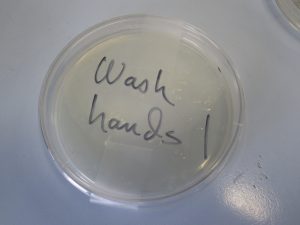
The following paragraph is taken from my post “Advocate for Yourself.”
“This could be the year of ongoing blizzards, repeated microbial “snow” weeks. Schools will need back-up plans for their back-up plans potentially. Online learning will not become a memory soon. Outbreaks in a school are guaranteed to ensure shut-downs, whether short or long.”
That paragraph may have lost potency as I blogged about the need to communicate with school leaders and others planning for next year. Those future shut-downs should not get subordinated to the agenda for the upcoming year. The threat of repeated shut-downs is not merely real: It is inevitable.
In the absence of a vaccine, people will continue getting ill. The rate will change. The severity will hopefully decrease as medications become more available. But teachers and students will become ill with COVID-19. We are locked into this struggle because those original sick persons in Wuhan were passing the virus on to two to three people apiece when they got sick. That number would rise as high as 3.82 last January. For those interested in “R,” I recommend https://www.newsweek.com/what-coronavirus-r-number-how-contagious-covid-19-1498204 — a good fast explanation of this measure. COVID-19 is easy to catch.
Come next fall, then, what happens when “Ms. T” spikes a fever? With luck, this hot and aching teacher can quickly locate a COVID-19 test. Geography may have a great deal to do with that luck, unfortunately, but the obviously ill now can expect to find tests, even if the process remains inconvenient. For purposes of this hypothetical scenario, we’ll assume that Ms. T does not have to go to the hospital right away. Ms. T sits in the drive-thru line to get swabbed. The test comes back positive.
How many people now are supposed to enter a 14-day quarantine? If Ms. T is an elementary teacher, her whole class to start, but that’s only the start. What if Ms. T had lunch duty? What if Ms. T had been copying papers in the front office? Was the teacher’s lounge open in her school? How many colleagues had lunch with Ms. T before she realized she was sick? Let’s assume they kept their social distance. How big is that lounge? Even with distance, if Ms. T sits in a small enough room for a long enough time, that distance does not guarantee safety. If, Ms. T teaches middle or high school, our scenario rapidly becomes much wilder. Over the course of the day, she may have taught 150 students.
Exposures will be difficult to calculate. The evidence suggests the count may have to start from before Ms. T decided to wait in the testing line. From reports, we know that on the first day, many coronavirus victims don’t know they are sick. A slightly scratchy throat may combine with feeling a bit warm and tired. Sometimes the only sign may be odd, random joint pains that leave people wondering how they strained their muscles. Maybe a slight cough moves in along with a sense of breathlessness and related anxiety. COVID-19 has so many odd symptoms. That first warning shot across the bow might even be a stomach ache or diarrhea.
Why does this matter? Because until testing is vastly better than it is currently, Ms. T may be shedding virus all over the place before she even realizes she is truly sick. We are all used to rationalizing away symptoms of illness. I can’t think how many sick people of my acquaintance have told me, “Oh, it’s my allergies.” only to admit later that, oops, maybe all those sneezes had nothing to do with ragweed pollen or their particular allergen.
I remember my oldest girl calling for advice from her grandparents’ house. She thought she had the flu. She had flown out to visit them a few days earlier on a delightful whim that ended with all three suffering fevers and aches. (Everyone got through that event fine. She had given her mom and the same grandparents the flu about 25 years earlier after another plane flight. When the world opens up, I recommend driving to see grandparents.)
Sickness just happens. Sheltering at home helps. Avoiding exposure helps. But once we open the schools, the shelter automatically shuts down.
Eduhonesty: I am not saying we should not reopen schools. We can’t let the educational system and the economy flatline out of fear. We are going to have to open before the economic landscape becomes a wasteland of failed businesses and dead dreams. We are going to reopen because no viable economic plan allows us to stay shut until everyone has gotten sick or vaccinated. We are also going to reopen because the scientists are not running the show.
But I want fellow teachers to be ready. These are the “snow” weeks of next year. Those closures will happen. When planning next year, expect possible shut-downs. Sometimes the snow never falls. But here in Illinois, they are not even predicting the coronavirus peak until mid-June.
Some of that microbial snow has to fall.
